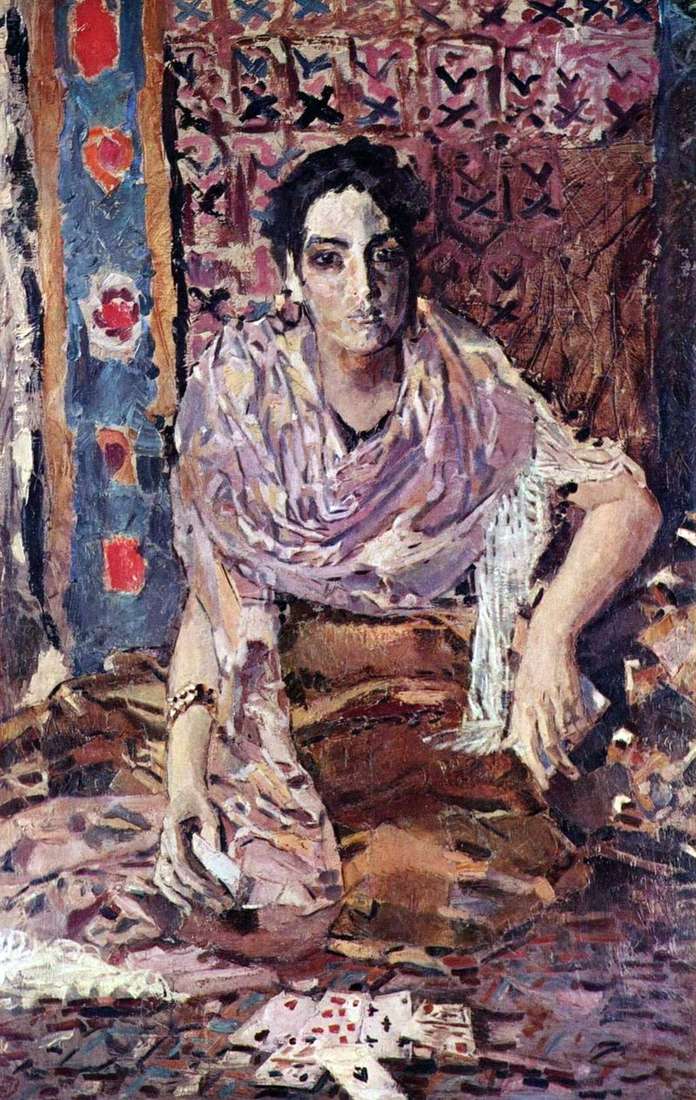
Vrubel loved to travel around the country. He visited: Rome, Milan, Athens and other cities, but the heart is forever left in the Russian capital – Moscow. Such wanderings had a positive effect on the artist’s works, leaving a fiery trail in history.
The picture “Fortune-teller” is one of such creative impulses. Visiting Spain, Vrubel began to write passionate paintings full of feelings and tenderness. Many critics and historians believe that seeing the opera “Carmen” the artist in a fit of feelings created this picture.
In literature, “Carmen” is a love story telling about a gypsy woman and her lover. Hence the plot begins the picture. The center of composition is a romale with an unusually wild and predatory appearance, which conceals many secrets. Short hair gives out an imperious and strong nature, which can stand up for itself. The language of the body speaks the same thing. The pretended softness of the position of the trunk is contrasted with confident hands. About its inconsistency says disharmonious appearance and the surrounding situation. Rich carpets are not combined with the girl’s simple dress that inspires thoughts about how she got here and where it all comes from?
The people of the Gypsies have always been credited with magical abilities. Therefore, Vrubel in the hands of the girl put the cards, which personify the connection with the nomadic people. To enhance the effect, the fortuneteller holds a mysterious peak ace, portending a blow to fate or a long journey full of danger and difficulties. The woman, as if in mockery, does not look at the cards, experiencing the come to her strength.
The symbol of color can be found here. For example, a pink scarf, traditionally meaning infantilism, here acquires a different character: the cunning and insidiousness of a mysterious and unpredictable stranger. She has a look like a beautiful woman from a harem, wishing to master the art of witchcraft.
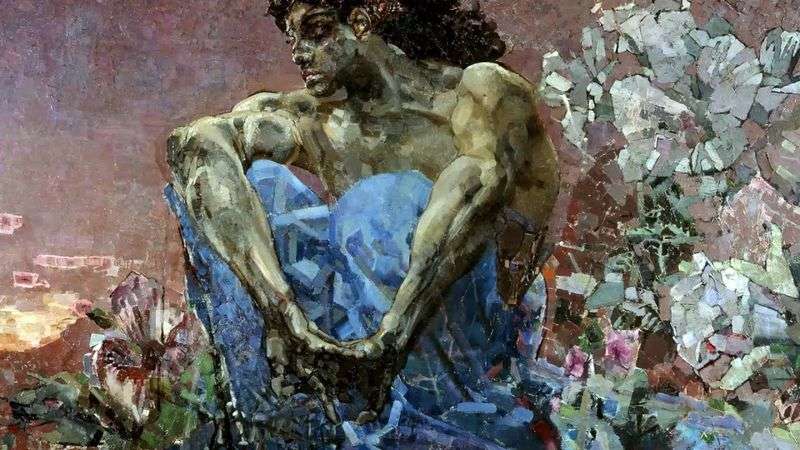 Demon seated by Mikhail Vrubel
Demon seated by Mikhail Vrubel Portrait of NI Zabela-Vrubel against the background of birches by Mikhail Vrubel
Portrait of NI Zabela-Vrubel against the background of birches by Mikhail Vrubel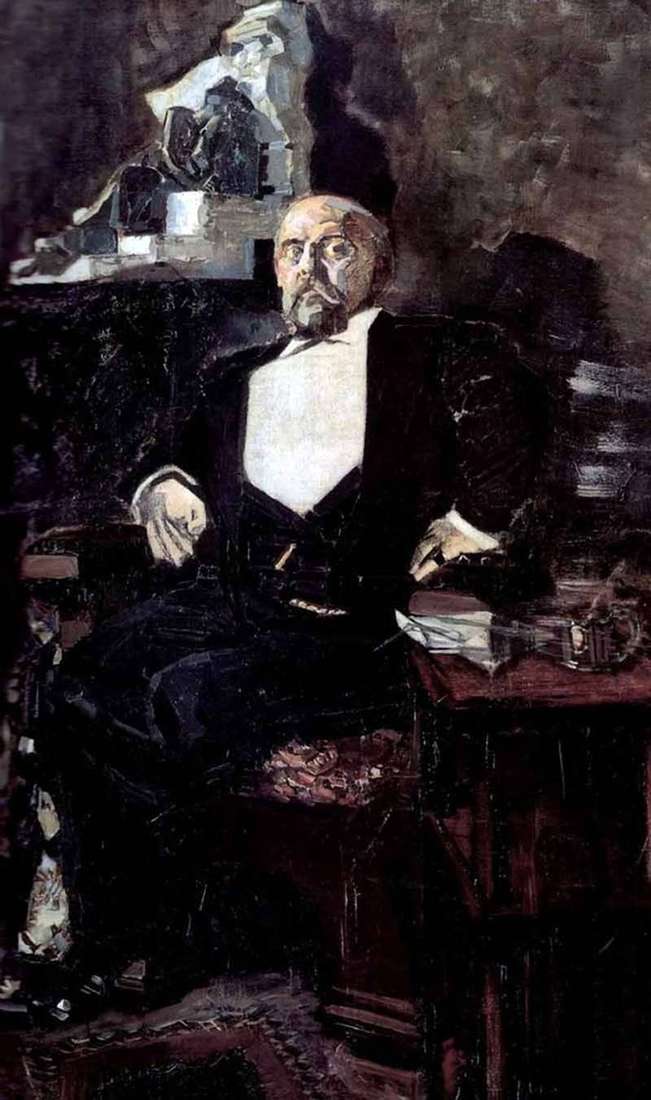 Portrait of Savva Mamontov by Mikhail Vrubel
Portrait of Savva Mamontov by Mikhail Vrubel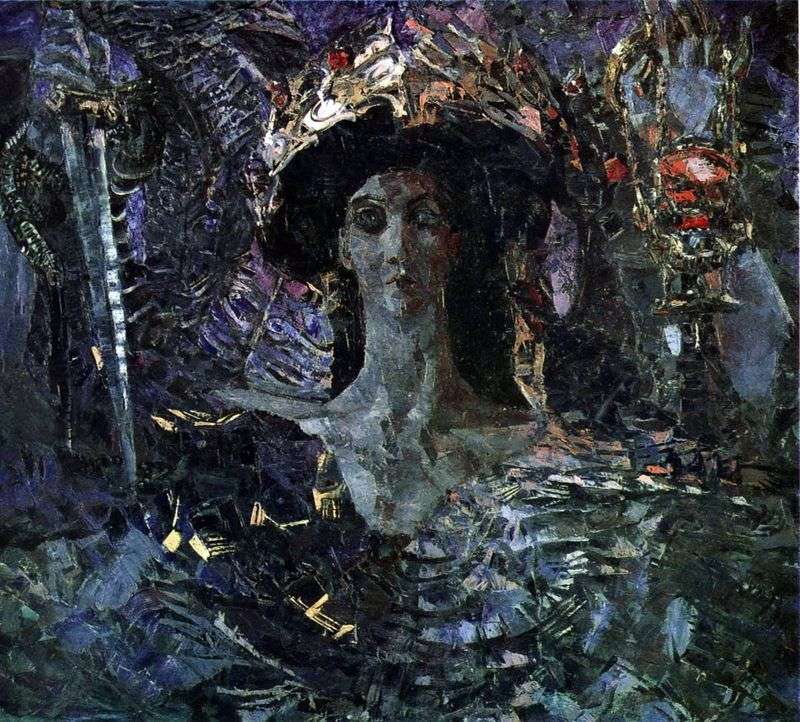 The six-winged Seraphim. Azrael by Mikhail Vrubel
The six-winged Seraphim. Azrael by Mikhail Vrubel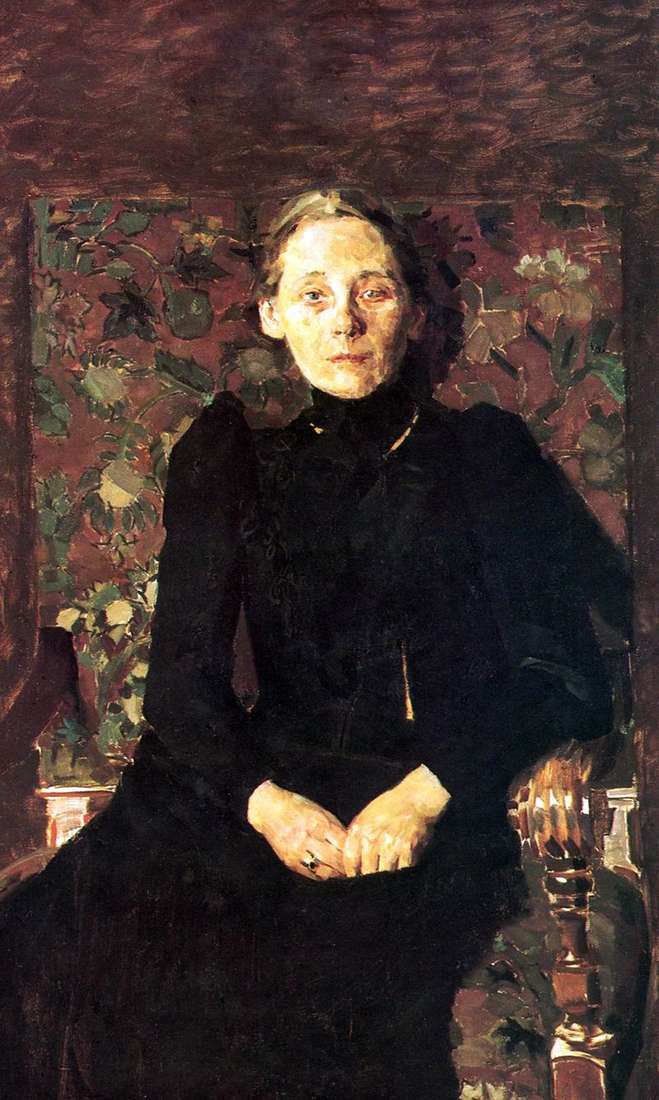 Portrait of MI Artsybusheva by Mikhail Vrubel
Portrait of MI Artsybusheva by Mikhail Vrubel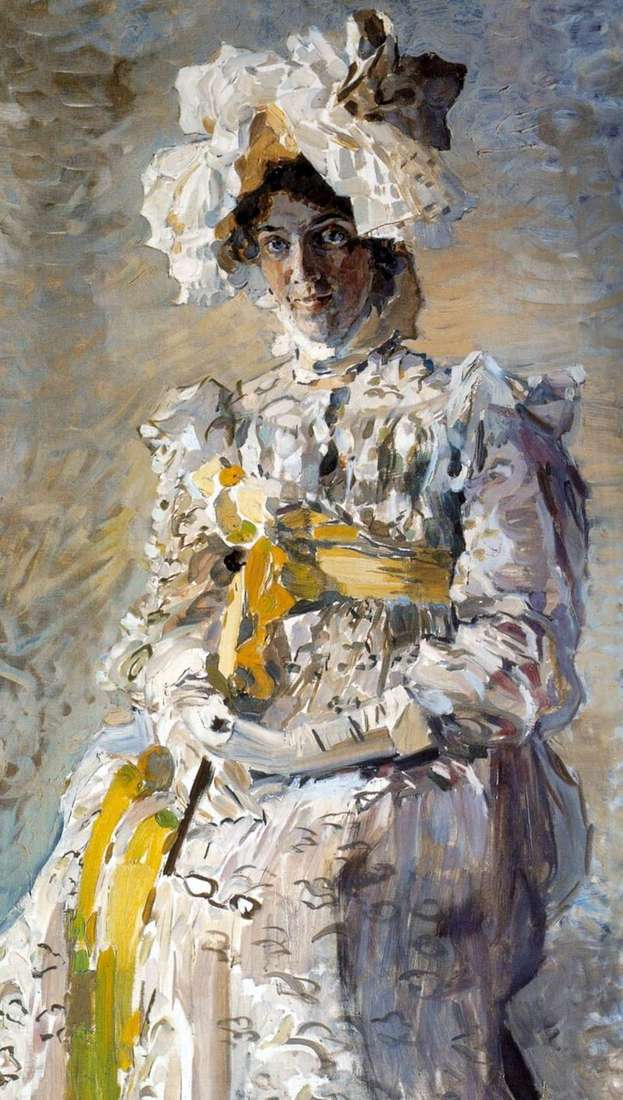 Portrait of the artist NI Zabela-Vrubel, the artist’s wife, in the summer toilet “Empire” by Mikhail Vrubel
Portrait of the artist NI Zabela-Vrubel, the artist’s wife, in the summer toilet “Empire” by Mikhail Vrubel The Fortune Teller by Georges de La Tour
The Fortune Teller by Georges de La Tour Fortune-teller by Michelangelo Merisi da Caravaggio
Fortune-teller by Michelangelo Merisi da Caravaggio